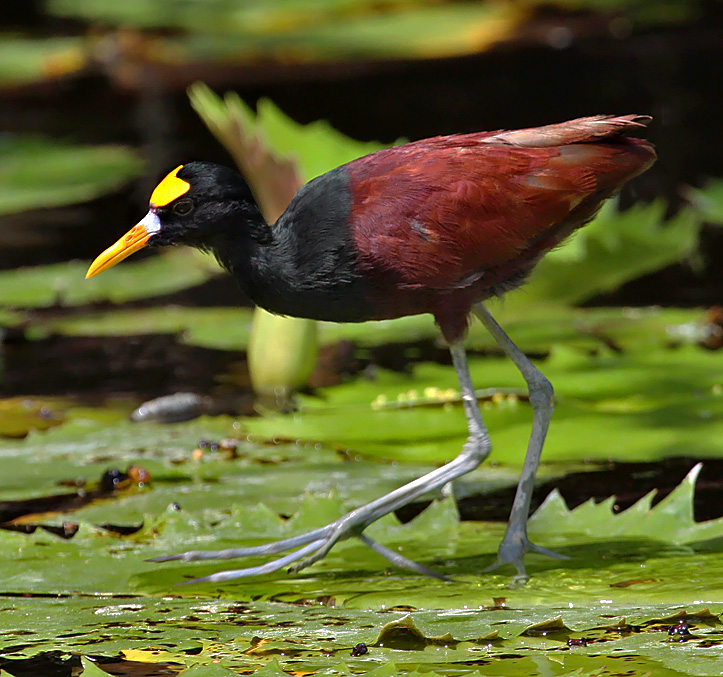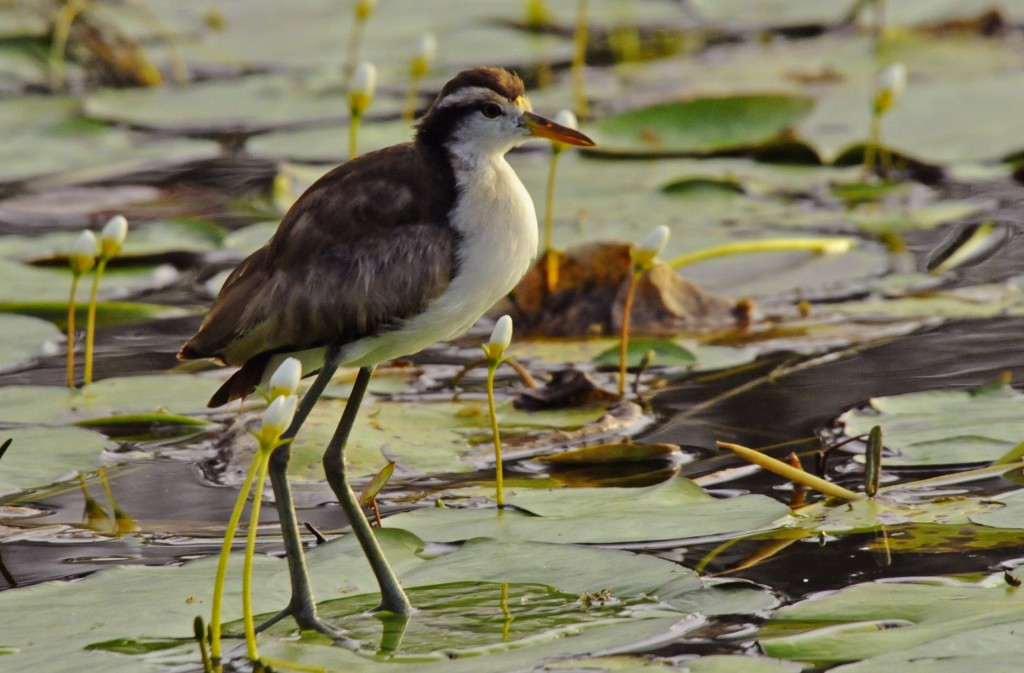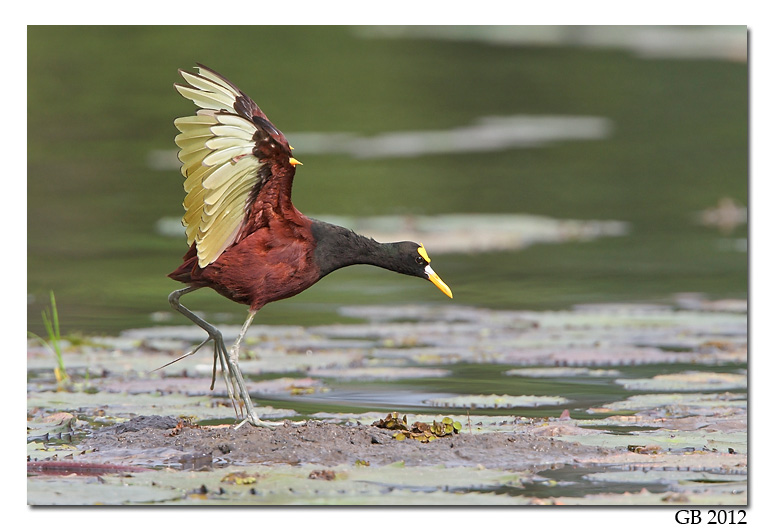
Jacana spinosa
TAXONOMY
Jacana spinosa Linnaeus, 1758, western Panama. Three subspecies.
OTHER COMMON NAMES
English: American jacana; French: Jacana du Mexique; German:
Gelbstirn-Blatthьhnchen; Spanish: Jacana Centroamericana.
PHYSICAL CHARACTERISTICS
6.7–9 in (17–23 cm). Females are 60% heavier than males.
Adults have reddish-brown plumage with contrasting greenishyellow
wing feathers and a yellow forehead shield. Juveniles are
light brown and white.
DISTRIBUTION
Year-round resident in Mexico, from Gulf of Mexico south, including
Yucutan peninsula and Cozumel, Central America, and
West Indies; also occasionally appears in southern Texas, north
to Austin and west of San Antonio, where it used to breed.
HABITAT
Marshes, ponds, and lakes with floating aquatic vegetation; also
rivers, flooded pastures, and wet meadows. Breeds in both permanent
and seasonal wetlands.
BEHAVIOR
Males and females actively defend territories with vocal calls.
Females will engage in fights with intruders.
FEEDING ECOLOGY AND DIET
Prefers a variety of aquatic plants and insects; except for water
lily seeds, ingestion of plant material may be incidental.
REPRODUCTIVE BIOLOGY
Breeds during rainy season if a permanent marshland is available.
Females are polyandrous and mate with up to four males
and guard their territories. Males incubate eggs and care for
chicks. Males build nests of leaves and plants on floating vegetation.
Females lay four glossy brown speckled eggs. Incubation
is 22–28 days. Breeding success is less than 50%.
CONSERVATION STATUS
Not threatened.
SIGNIFICANCE TO HUMANS
None known.
Photo Gallery of - Northern jacana




 Animalia Life
Animalia Life